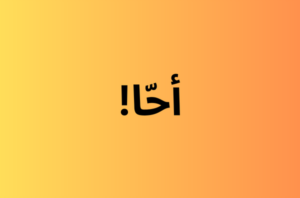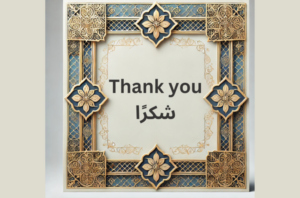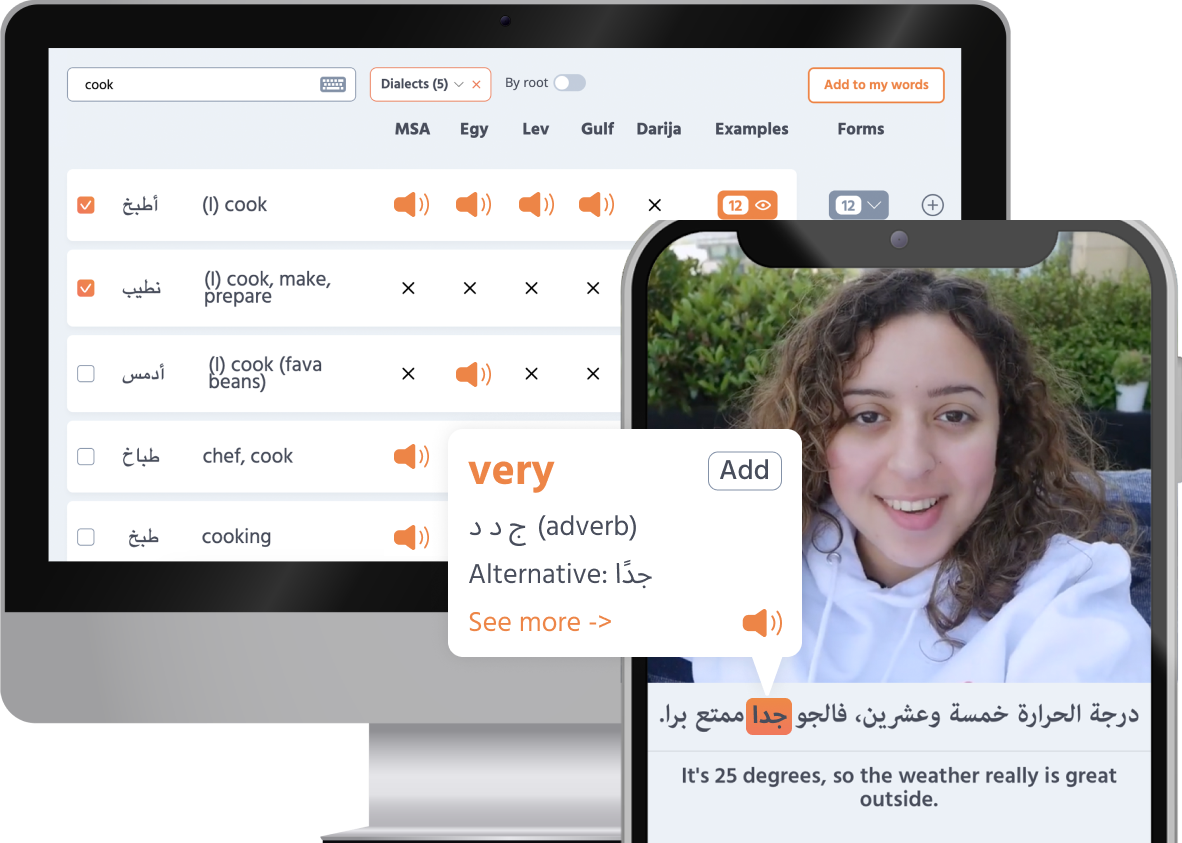Eid al-Adha, also known as the Festival of Sacrifice , holds a special place in the hearts of Muslims around the world. It’s a time of reflection, tradition, and coming together with loved ones. In this article, we’ll take a closer look at what Eid al-Adha is all about – its significance, rituals, and the festive atmosphere it brings. From the timeless story of Prophet Ibrahim’s faith to the cherished moments spent with family and friends, Eid al-Adha offers a window into the rich cultural heritage and spiritual traditions of Islam . So, join us as we explore the essence of Eid al-Adha, where every moment is filled with meaning, connection, and the spirit of celebration.
Eid al-Adha: a tale of devotion So, “What is Eid al-Adha?” Eid al-Adha is the second of the two great Muslim festivals, also called: the Greater Festival العِيدْ الكبير
. It’s the “Festival of Sacrifice,” where tales of faith come to life. This festival celebrates Prophet Ibrahim’s ultimate test of faith, depicted in the Quran and the Bible. Ibrahim was ready to sacrifice his son Ismail (Isaac in the biblical version) upon a dream vision he saw, only to be stopped by God who sent the Angel Gabriel with a ram to be sacrificed instead of Ismail. It’s a story of trust, miracles, and divine care at its best!
Don’t miss this article if you’re interested in learning about the second great Muslim festival ; Eid al-Fitr: What Is It and When Is It Celebrated?
When is Eid al-Adha? You may be wondering: “When is Eid al-Adha this year?” Well, keep your eyes on the lunar calendar, folks! Falling on the 10th day of Dhu al-Hijjah ذُو الحِجَّة
(the twelfth Hijri month), Eid Al-Adha’s date hops around the Gregorian calendar, so watching the moon phases رُؤْيِة الهِلَال
is the key to catching this celebration on time. It starts on the evening of June 5th and ends on the evening of June 9th, 2025. Eid Al-Adha is celebrated for four days which are deemed a national vacation in Muslim countries. People take a break from their schools, universities, and work to enjoy the sacred times with their families and friends.
Combination of pilgrimage and Eid Eid al-Adha and the Hajj pilgrimage are always intertwined. Although they have no direct relation, the Eid comes a day after the completion of Hajj and marks the climax of the pilgrimage season. Hajj is one of the important five faith pillars of Islam and it is a religious obligation for all Muslims who are able to undertake it financially and physically. Pilgrims stand on Mount Arafat which lies in Saudi Arabia 20 km southeast from Mecca. It is also known as جَبَل الرَحْمَة
(Mount of mercy). Standing on Mount Arafat is the most important part of Hajj and whoever misses the standing on Arafat misses Hajj. Pilgrims pray and reflect, mirroring the spiritual atmosphere of Eid back home. It’s a powerful display of unity and spirituality, stretching from Mecca’s plains to every corner of the Muslim world.
Dressed up, scented, and ready to go! As the Eid season approaches, people go shopping for new clothes. Then they kick off the Eid morning in style. After a cleansing morning shower, everyone wears their best attire, spritzes on some perfume, and steps out sparkling, ready to celebrate with fresh spirits.
Eid greetings Come Eid, and the air buzzes with greetings like “كل سنة وانت طيب”
in Egyptian and “تقبل الله منا ومنكم”
in Standard Arabic , and كل عام وأنتو بخير
in Levantine and
in Gulf , and مبروك العيد
in Darija . These are not just words but heartfelt wishes, spreading love and prayers for divine blessings in a community-wide high-five. The Eid days mark family gatherings and warm visits where people reconnect and share memorable moments.
Eid prayers: the ultimate gathering! Right after the crack of dawn on Eid Al-Adha when the sun is up, people in their new outfits flood to mosques and yards, filled with excitement. It’s prayer time, and we’re talking about a really massive spiritual gathering. Rows upon rows of people, from every walk of life, standing shoulder to shoulder in a grand display of unity and faith.
The air vibrates with the sounds of Takbirat (تَكْبِيرَاتْ العِيدْ)
, the call for prayers, echoing far and wide as everyone joins in a powerful chorus of devotion. Here are the Takbirat lyrics:
اللهُ أَكْبَرْ اللهُ أَكْبَرْ اللهُ أَكْبَرْ. لَا إِلَهَ إِلَّا الله. اللهُ أَكْبَرْ اللهُ أَكْبَرْ اللهُ أَكْبَرْ وَلله الْحَمْدْ
اللهُ أَكْبَرُ كَبِيرَا وَالْحَمْدُ للهِ كَثِيرَا وَسُبْحَانَ اللهِ بُكْرَةً وَأَصِيلَا
لَا إِلَهَ إِلَّا الله وَحْدَه، صَدَقَ وَعْدَه، وَنَصَرَ عَبْدَه، وَأَعَزَّ جُنْدَه، وَهَزَمَ الْأَحْزَابَ وَحْدَه
لَا إِلَه إِلَّا الله، وَلَا نَعْبُدُ إِلَّا إِيَّاه، مُخْلِصِينَ لَهُ الدين وَلَوْ كَرِهَ الْكَافِرُونْ
اللَّهُمَّ صَلِّ عَلَى سَيِّدِنَا مُحَمَّد، وَعَلَى آلِ سَيَّدِنَا مُحَمَّد، وَعَلَى أَصْحَابِ سَيَّدِنَا مُحَمَّد
وَعَلَى أَنْصَارِ سَيِّدِنَا مُحَمَّد، وَعَلَى أَزْوَاجِ سَيِّدِنَا مُحَمَّد، وَعَلَى ذُرِّيِّةِ سَيِّدِنَا مُحَمَّد وَسَلِّمْ تَسْلِيمًا كَثِيرًا
And here is the English translation:
“Allah is the Greatest, Allah is the Greatest, Allah is the Greatest. There is no god but Allah. Allah is the Greatest, Allah is the Greatest, Allah is the Greatest, and all praise is due to Allah. Allah is the Greatest in abundance, and praise be to Allah abundantly. Glorified is Allah morning and evening. There is no god but Allah alone, He fulfilled His promise, granted victory to His servant, and strengthened His forces. There is no god but Allah, and we worship none but Him, sincerely and even if the disbelievers dislike it. O Allah, bless our master Muhammad, and the family of our master Muhammad, and the companions of our master Muhammad, and the supporters of our master Muhammad, and the wives of our master Muhammad, and the descendants of our master Muhammad, and grant them abundant peace.”
The Eid prayers are different from normal prayers as there are is no adhan أذَان
before them and they have Takbirat. They consist of two rak’ahs ركعتين
(kneeling). It is a special ritual that binds everyone in a shared spiritual experience, topped off with a sermon خطبَة
that hits home about life’s big lessons.
It’s more than just prayer; it’s a mega meet-up of community, where joyful smiles are the order of the day. This gathering is a dazzling spectacle of togetherness, showing the world the heartwarming spirit of Eid Al-Adha.
The Qurbani (Udheya الأٌضْحِيَة
): sharing is caring At the heart of Eid Al-Adha is the Qurbani (the word is Turkish from the Arabic word قُرْبَان
, root is قرب
means getting closer) or Udheya (أُضْحِيَة
in Arabic which means sacrifice), the sacrificial act that honors Ibrahim’s willingness to sacrifice in full obedience to God. Families that can afford to sacrifice a ritually acceptable animal do so and then divide the meat in equal shares among themselves, the poor, and friends and neighbors. The sacrificed animal must be a goat, a sheep, a lamb, a cow, a bull, or a camel, according to Islamic tradition. The animal must also be in good health and over a certain age to be slaughtered in a “halal” Islamic way. As for those who cannot do the sacrificing themselves, they can donate to have an animal sacrificed on their behalf. This tradition isn’t just about sacrifice; it’s about sharing joy and meat with loved ones and those in need, embodying the spirit of generosity and unity.
Eidiyah (العِيدِيَّة)
: kids’ favorite Eid tradition The Eidiyah, or cash gifts to children, sparks joy, teaching young ones about the beauty of generosity and sharing. Adults give children brand-new money notes to buy candy and toys as they wish. It’s a delightful Eid custom that brings smiles and excitement, making Eid memories last a lifetime.
Feasting on Eid: a culinary journey Eid’s culinary showstoppers are dishes like:
In Egypt:
الفَتَّة بِاللَحْمَة
, where succulent meat teams up with rice and crispy bread, drenched in a tangy sauce. Then there’s الكِبْدَة
, the rich liver dish that’s a festival of flavors, followed by the smoky goodness of grilled steak اللَحْمَة المَشْوِيَّة
. And don’t overlook الرُقَاقْ باللَحْمَة المَفْرُومَة
, a pastry packed with spiced minced meat, offering a crispy, meaty experience.
In the Levant:
“Mahshi” محشي
(Stuffed vegetables with a savory mix of rice, herbs, and sometimes meat), “Mansaf” منسف
(Lamb cooked in a tangy yogurt sauce, served over rice with nuts and herbs), “Maqloubi” مقلوبة
and “Labaniye” لبنية
(cooked rice blended with yogurt).
In Maghreb:
“Couscous” كسكس
(Fluffy semolina served with a flavorful broth of vegetables and meat) or “Boulfaf” بولفاف
(Pieces of liver and lungs wrapped in fat, then grilled) and “Bozloaf” بوزلوف
(Roasted or boiled sheep’s head, typically served with spices, chickpeas, and sometimes vegetables).
In the Gulf:
“Kabsa” كبسة
(Fragrant rice dish with spices and tender meat) is very popular in Eid.
It’s a feast that defines Eid, bringing everyone together around delicious, traditional dishes.
Controversy The traditional practices marking Eid al-Adha have sparked debates among the Muslim community amidst the changing landscape of modern life. Central to the controversy is the ritual slaughter of animals, which clashes with evolving ethical sensitivities and environmental concerns. For instance, in urban areas where space is limited, the ritual slaughter can raise issues of hygiene and public safety. While the act symbolizes Prophet Ibrahim’s willingness to sacrifice his own son, some argue it contradicts contemporary values of animal welfare and sustainability. Moreover, in an era of economic strain across much of the Middle East, the financial burden of purchasing sacrificial animals can strain already tight budgets for many families. Balancing tradition with ethical, economic, and environmental considerations presents a complex challenge, urging communities to navigate this tension with empathy and adaptability. As discussions persist, finding innovative, modern solutions that respect both tradition and contemporary values becomes imperative for the harmonious observance of Eid al-Adha. This is essential to ensure the continuation of the traditional values of Eid al-Adha, whilst simultaneously reflecting modern concerns.
Wrapping It Up
You now know it’s more than just a holiday; it’s a festival rich in faith, folklore, and fun. From the spiritual saga of Ibrahim to the communal feasts and joyous gatherings, Eid brings a whirlwind of excitement and unity. So, get ready to dive into the essence of Eid Al-Adha , where every moment is a celebration of life, community, and divine blessings.
Oh, and by the way… If learning Arabic at your own pace, with fun, real-world videos sounds like your style, then Playaling could be exactly what you’re looking for!
With Playaling, you’ll dive into any major Arabic dialect or MSA. Our diverse range of videos has it all—from everyday conversations and cultural moments to music videos, TV and movie clips, influencer content, news broadcasts, and inspiring talks.
Our interactive captions let you tap any word for instant translations, context, and audio. So, real Arabic content becomes accessible with just a click. Miss something? No problem—rewind and listen as often as you need, or hover over subtitles for quick definitions.
Spot a word you want to learn? Save it to your personalized word set, or dive into curated sets for focused practice and easy review.
Interactive exercises let you dive in and practice what you’ve learned.
Need to look something up? The Audio Dictionary has you covered with clear human pronunciations and real world examples.
It’s a learning experience that keeps you engaged, bringing authentic, real-world Arabic closer to you every step of the way.
Give it a try!









